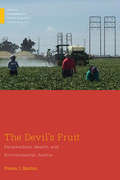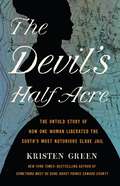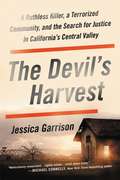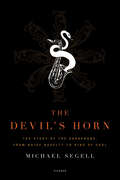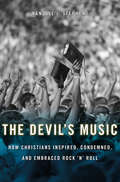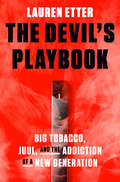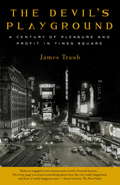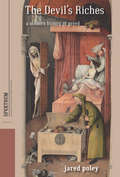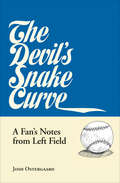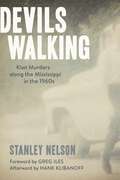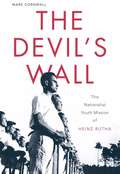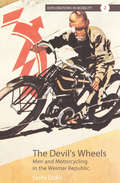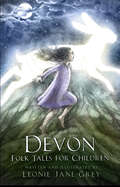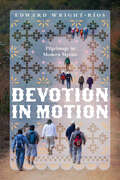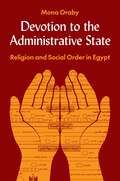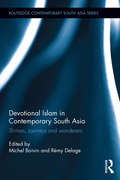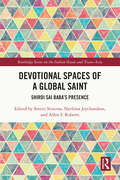- Table View
- List View
The Devil's Fruit: Farmworkers, Health, and Environmental Justice (Medical Anthropology)
by Dvera I. SaxtonThe Devil's Fruit describes the facets of the strawberry industry as a harm industry, and explores author Dvera Saxton’s activist ethnographic work with farmworkers in response to health and environmental injustices. She argues that dealing with devilish—as in deadly, depressing, disabling, and toxic—problems requires intersecting ecosocial, emotional, ethnographic, and activist labors. Through her work as an activist medical anthropologist, she found the caring labors of engaged ethnography take on many forms that go in many different directions. Through chapters that examine farmworkers’ embodiment of toxic pesticides and social and workplace relationships, Saxton critically and reflexively describes and analyzes the ways that engaged and activist ethnographic methods, frameworks, and ethics aligned and conflicted, and in various ways helped support still ongoing struggles for farmworker health and environmental justice in California. These are problems shared by other agricultural communities in the U.S. and throughout the world.
The Devil's Half Acre: The Untold Story of How One Woman Liberated the South's Most Notorious Slave Jail
by Kristen GreenThe inspiring true story of an enslaved woman who liberated an infamous slave jail and transformed it into one of the nation&’s first HBCUs In The Devil&’s Half Acre, New York Times bestselling author Kristen Green draws on years of research to tell the extraordinary and little-known story of young Mary Lumpkin, an enslaved woman who blazed a path of liberation for thousands. She was forced to have the children of a brutal slave trader and live on the premises of his slave jail, known as the &“Devil&’s Half Acre.&” When she inherited the jail after the death of her slaveholder, she transformed it into &“God&’s Half Acre,&” a school where Black men could fulfill their dreams. It still exists today as Virginia Union University, one of America&’s first Historically Black Colleges and Universities. A sweeping narrative of a life in the margins of the American slave trade, The Devil&’s Half Acre brings Mary Lumpkin into the light. This is the story of the resilience of a woman on the path to freedom, her historic contributions, and her enduring legacy.
The Devil's Harvest: A Ruthless Killer, a Terrorized Community, and the Search for Justice in California's Central Valley
by Jessica Garrison"Meticulously researched and tightly woven, The Devil's Harvest is an important story because it tells us that if [this] can happen in one place, then it can happen in any place. And that's damn scary."--Michael Connelly, New York Times bestselling author of The Closers, The Lincoln Lawyer, and The Night FireA page-turning, suspenseful story of a drug cartel hit man who got away with murder after murder in California's Central Valley for three decades, The Devil's Harvest reveals how the criminal justice system fails our most vulnerable immigrant communitiesOn the surface, fifty-eight-year-old Jose Martinez didn't seem evil or even that remarkable--just a regular neighbor, good with cars and devoted to his family. But in between taking his children to Disneyland and visiting his mom, Martinez was also one of the most skilled professional killers police had ever seen.He tracked one victim to one of the wealthiest corners of America, a horse ranch in Santa Barbara, and shot him dead in the morning sunlight, setting off a decades-long manhunt. He shot another man, a farmworker, right in front of his young wife as they drove to work in the fields. The widow would wait decades for justice. Those were murders for hire. Others he killed for vengeance.How did Martinez manage to evade law enforcement for so long with little more than a slap on the wrist? Because he understood a dark truth about the criminal justice system: if you kill the "right people"--people who are poor, who aren't white, and who don't have anyone to speak up for them--you can get away with it.Melding the pacing and suspense of a true crime thriller with the rigor of top-notch investigative journalism, The Devil's Harvest follows award-winning reporter Jessica Garrison's relentless search for the truth as she traces the life of this assassin, the cops who were always a few steps behind him, and the families of his many victims. Drawing upon decades of case files, interrogation transcripts, on-the-ground reporting, and Martinez's chilling handwritten journals, The Devil's Harvest uses a gripping and often shocking narrative to dig into one of the most important moral questions haunting our politically divided nation today: Why do some deaths--and some lives--matter more than others?span
The Devil's Horn: The Story of the Saxophone, from Noisy Novelty to King of Cool
by Michael SegellIn The Devil's Horn, Michael Segell traces the 160-year history of the saxophone-a horn that created a sound never before heard in nature, and that from the moment it debuted has aroused both positive and negative passions among all who hear it. The saxophone has insinuated itself into virtually every musical idiom that has come along since its birth as well as into music with traditions thousands of years old. But it has also been controversial, viewed as a symbol of decadence, immorality and lasciviousness: it was banned in Japan, saxophonists have been sent to Siberian lockdown by Communist officials, and a pope even indicted it.Segell outlines the saxophone's fascinating history while he highlights many of its legendary players, including Benny Carter, Illinois Jacquet, Sonny Rollins, Lee Konitz, Phil Woods, Branford Marsalis, and Michael Brecker. The Devil's Horn explores the saxophone's intersections with social movement and change, the innovative acoustical science behind the instrument, its struggles in the world of "legit" music, and the mystical properties that seduce all who fall under its influence. Colorful, evocative, and richly informed, The Devil's Horn is an ingenious portrait of one of the most popular instruments in the world.
The Devil’s Music: How Christians Inspired, Condemned, and Embraced Rock ’n’ Roll
by Randall J. StephensWhen rock ’n’ roll emerged in the 1950s, ministers denounced it from their pulpits and Sunday school teachers warned of the music’s demonic origins. The big beat, said Billy Graham, was “ever working in the world for evil.” Yet by the early 2000s Christian rock had become a billion-dollar industry. The Devil’s Music tells the story of this transformation. Rock’s origins lie in part with the energetic Southern Pentecostal churches where Elvis, Little Richard, James Brown, and other pioneers of the genre worshipped as children. Randall J. Stephens shows that the music, styles, and ideas of tongue-speaking churches powerfully influenced these early performers. As rock ’n’ roll’s popularity grew, white preachers tried to distance their flock from this “blasphemous jungle music,” with little success. By the 1960s, Christian leaders feared the Beatles really were more popular than Jesus, as John Lennon claimed. Stephens argues that in the early days of rock ’n’ roll, faith served as a vehicle for whites’ racial fears. A decade later, evangelical Christians were at odds with the counterculture and the antiwar movement. By associating the music of blacks and hippies with godlessness, believers used their faith to justify racism and conservative politics. But in a reversal of strategy in the early 1970s, the same evangelicals embraced Christian rock as a way to express Jesus’s message within their own religious community and project it into a secular world. In Stephens’s compelling narrative, the result was a powerful fusion of conservatism and popular culture whose effects are still felt today.
Devil's Night
by Ze'Ev ChafetsA New York Times Notable BookOn Devil's Night, the night before Halloween, some citizens of Detroit try to burn down their neighborhoods for an international audience of fire buffs. This gripping and often heartbreaking tour of the "Murder Capital of America" often seems lit by those same fires. But as a native Detroiter, Ze'ev Chafets also shows us the city beneath the crime statistics--its ecstatic storefront churches; its fearful and embittered white suburbs; its cops and criminals; and the new breed of black officials who are determined to keep Detroit running in the midst of appalling dangers and indifference.
The Devil's Notebook
by Anton Szandor LaveyWisdom, humor, and dark observations by the founder of the Church of Satan. LaVey ponders such topics as nonconformity, occult faddism, erotic politics, the "Goodguy badge," demoralization and the construction of artificial human companions.
The Devil's Playbook: Big Tobacco, Juul, and the Addiction of a New Generation
by Lauren EtterBig Tobacco meets Silicon Valley in this corporate exposé of what happened when two of the most notorious industries collided—and the vaping epidemic was born.&“The best business book I&’ve read since Bad Blood.&”—Jonathan Eig, New York Times bestselling author of Ali: A Life Howard Willard lusted after Juul. As the CEO of tobacco giant Philip Morris&’s parent company and a veteran of the industry&’s long fight to avoid being regulated out of existence, he grew obsessed with a prize he believed could save his company—the e-cigarette, a product with all the addictive upside of the original without the same apparent health risks and bad press. Meanwhile, in Silicon Valley, Adam Bowen and James Monsees began working on a device that was meant to save lives and destroy Big Tobacco, but they ended up baking the industry&’s DNA into their invention&’s science and marketing. Ultimately, Juul&’s e-cigarette was so effective and so market-dominating that it put the company on a collision course with Philip Morris and sparked one of the most explosive public health crises in recent memory. In a deeply reported account, award-winning journalist Lauren Etter tells a riveting story of greed and deception in one of the biggest botched deals in business history. Etter shows how Philip Morris&’s struggle to innovate left Willard desperate to acquire Juul, even as his own team sounded alarms about the startup&’s reliance on underage customers. And she shows how Juul&’s executives negotiated a lavish deal that let them pocket the lion&’s share of Philip Morris&’s $12.8 billion investment while government regulators and furious parents mounted a campaign to hold the company&’s feet to the fire.The Devil&’s Playbook is the inside story of how Juul&’s embodiment of Silicon Valley&’s &“move fast and break things&” ethos wrought havoc on American health, and how a beleaguered tobacco company was seduced by the promise of a new generation of addicted customers. With both companies&’ eyes on the financial prize, neither anticipated the sudden outbreak of vaping-linked deaths that would terrorize a nation, crater Juul&’s value, end Willard&’s career, and show the costs in human life of the rush to riches—while Juul&’s founders, board members, and employees walked away with a windfall.
The Devil's Playground: A Century of Pleasure and Profit in Times Square
by James TraubAs Times Square turns 100, New York Times Magazine contributing writer James Traub tells the story of how this mercurial district became one of the most famous and exciting places in the world. The Devil's Playground is classic and colorful American history, from the first years of the twentieth century through the Runyonesque heyday of nightclubs and theaters in the 1920s and '30s, to the district's decline in the 1960s and its glittering corporate revival in the 1990s. First, Traub gives us the great impresarios, wits, tunesmiths, newspaper columnists, and nocturnal creatures who shaped Times Square over the century since the place first got its name: Oscar Hammerstein, Florenz Ziegfeld, George S. Kaufman, Damon Runyon, Walter Winchell, and "the Queen of the Nightclubs," Texas Guinan; bards like A. J. Liebling, Joe Mitchell, and the Beats, who celebrated the drug dealers and pimps of 42nd Street. He describes Times Square's notorious collapse into pathology and the fierce debates over how best to restore it to life. Traub then goes on to scrutinize today's Times Square as no author has yet done. He writes about the new 42nd Street, the giant Toys "R" Us store with its flashing Ferris wheel, the new world of corporate theater, and the sex shops trying to leave their history behind. More than sixty years ago, Liebling called Times Square "the heart of the world"--not just the center of the world, though this crossroads in Midtown Manhattan was indeed that, but its heart. From the dawn of the twentieth century through the 1950s, Times Square was the whirling dynamo of American popular culture and, increasingly, an urban sanctuary for the eccentric and the untamed. The name itself became emblematic of the tremendous life force of cities everywhere. Today, Times Square is once again an awe-inspiring place, but the dark and strange corners have been filled with blazing light. The most famous street character on Broadway, "the Naked Cowboy," has his own website, and Toys "R" Us calls its flagship store in Times Square "the toy center of the universe." For the giant entertainment corporations that have moved to this safe, clean, and self-consciously gaudy spot, Times Square is still very much the center of the world. But is it still the heart?
The Devil's Pleasure Palace
by Michael WalshIn the aftermath of World War II, America stood alone as the world's premier military power. Yet its martial confidence contrasted vividly with its sense of cultural inferiority. Still looking to a defeated and dispirited Europe for intellectual and artistic guidance, burgeoning trans-national elite in New York and Washington embraced not only the war's refugees, but many of their ideas as well, and nothing has proven more pernicious than those of the Frankfurt School and its reactionary philosophy of "critical theory." At once overly intellectualized and emotionally juvenile, Critical Theory - like Pandora's Box - released a horde of demons into the American psyche. When everything could be questioned, nothing could be real, and the muscular, confident empiricism that had just won the war gave way, in less than a generation, to a central-European nihilism celebrated on college campuses across the United States. Seizing the high ground of academe and the arts, the New Nihilists set about dissolving the bedrock of the country, from patriotism to marriage to the family to military service; they have sown (as Cardinal Bergoglio - now Pope Francis - once wrote of the Devil) "destruction, division, hatred, and calumny" - and all disguised as the search for truth.In The Devil's Pleasure Palace we will look at the ways Critical Theory took root in America and, once established and gestated, has affected nearly every aspect of American life and society - and what can be done to stop it.
The Devil's Riches: A Modern History of Greed
by Jared PoleyA seeming constant in the history of capitalism, greed has nonetheless undergone considerable transformations over the last five hundred years. This multilayered account offers a fresh take on an old topic, arguing that greed was experienced as a moral phenomenon and deployed to make sense of an unjust world. Focusing specifically on the interrelated themes of religion, economics, and health-each of which sought to study and channel the power of financial desire-Jared Poley shows how evolving ideas about greed became formative elements of the modern experience.
Devil's Sanctuary: An Eyewitness History of Mississippi Hate Crimes
by James Dickerson Alex AlstonRecalling the state's shameful racist history of lynching, arson, denial of rights, false imprisonment, and other heinous crimes, this riveting narrative explores how Mississippi became a safe haven for the most violent and virulent racists, who were immune to prosecution for their crimes. This sanctuary of the then status quo emerged from the 1956 Mississippi State Sovereignty Commission's efforts to preserve segregation and "Mississippi Values" by declaring the state outside the jurisdiction of the federal government. Analysis of the major crimes, the institutional collusion, delayed and never-delivered justice, and the state's attempts at atonement are interspersed with the authors' recollections of what they saw, heard, and experienced as whites--thus "insiders"--during this troubled time. With commentary extending to the present day, this is both a well-researched history and an eyewitness record of living through an era of judicial, media, and economic terrorism directed against African Americans.
The Devil's Snake Curve: A Fan's Notes from Left Field
by Josh OstergaardThe Devil's Snake Curve offers an alternative American history, in which colonialism, jingoism, capitalism, and faith are represented by baseball. Personal and political, it twines Japanese internment camps with the Yankees; Walmart with the Kansas City Royals; and facial hair patterns with militarism, Guantanamo, and the modern security state. An essay, a miscellany, and a passionate unsettling of Josh Ostergaard's relationship with our national pastime, it allows for both the clover of a childhood outfield and the persistence of the game's service to those in power. America and baseball are both hard to love or leave in this, by turns coruscating and heartfelt, debut.Josh Ostergaard holds an MFA in creative writing from the University of Minnesota and an MA in cultural anthropology. He has been an urban anthropologist at the Field Museum and now works at Graywolf Press.
The Devil's Tramping Ground and Other North Carolina Mystery Stories
by Sue HardenFrom the first colonization at Roanoke Island, the bizarre and inexplicable have shrouded the Tar Heel State. From history and legend, John Harden records ominous events that have shaped or colored state history.
Devils Walking: Klan Murders along the Mississippi in the 1960s
by Greg Iles Stanley NelsonAfter midnight on December 10, 1964, in Ferriday, Louisiana, African American Frank Morris awoke to the sound of breaking glass. Outside his home and shoe shop, standing behind the shattered window, Klansmen tossed a lit match inside the store, now doused in gasoline, and instantly set the building ablaze. A shotgun pointed to Morris’s head blocked his escape from the flames. Four days later Morris died, though he managed in his last hours to describe his attackers to the FBI. Frank Morris’s death was one of several Klan murders that terrorized residents of northeast Louisiana and Mississippi, as the perpetrators continued to elude prosecution during this brutal era in American history. In Devils Walking: Klan Murders along the Mississippi in the 1960s, Pulitzer Prize finalist and journalist Stanley Nelson details his investigation—alongside renewed FBI attention—into these cold cases, as he uncovers the names of the Klan’s key members as well as systemized corruption and coordinated deception by those charged with protecting all citizens. Devils Walking recounts the little-known facts and haunting stories that came to light from Nelson’s hundreds of interviews with both witnesses and suspects. His research points to the development of a particularly virulent local faction of the Klan who used terror and violence to stop integration and end the advancement of civil rights. Secretly led by the savage and cunning factory worker Red Glover, these Klansmen—a handpicked group that included local police officers and sheriff’s deputies—discarded Klan robes for civilian clothes and formed the underground Silver Dollar Group, carrying a silver dollar as a sign of unity. Their eight known victims, mostly African American men, ranged in age from nineteen to sixty-seven and included one Klansman seeking redemption for his past actions. Following the 2007 FBI reopening of unsolved civil rights–era cases, Nelson’s articles in the Concordia Sentinel prompted the first grand jury hearing for these crimes. By unmasking those responsible for these atrocities and giving a voice to the victims’ families, Devils Walking demonstrates the importance of confronting and addressing the traumatic legacy of racism.
The Devil's Wall
by Mark CornwallLegend has it that twenty miles of volcanic rock rising through the landscape of northern Bohemia was the work of the devil, who separated the warring Czechs and Germans by building a wall. The nineteenth-century invention of the Devil’s Wall was evidence of rising ethnic tensions. In interwar Czechoslovakia, Sudeten German nationalists conceived a radical mission to try to restore German influence across the region. Mark Cornwall tells the story of Heinz Rutha, an internationally recognized figure in his day, who was the pioneer of a youth movement that emphasized male bonding in its quest to reassert German dominance over Czech space. Through a narrative that unravels the threads of Rutha’s own repressed sexuality, Cornwall shows how Czech authorities misinterpreted Rutha’s mission as sexual deviance and in 1937 charged him with corrupting adolescents. The resulting scandal led to Rutha’s imprisonment, suicide, and excommunication from the nationalist cause he had devoted his life to furthering. Cornwall is the first historian to tackle the long-taboo subject of how youth, homosexuality, and nationalism intersected in a fascist environment. The Devil’s Wall also challenges the notion that all Sudeten German nationalists were Nazis, and supplies a fresh explanation for Britain’s appeasement of Hitler, showing why the British might justifiably have supported the 1930s Sudeten German cause. In this readable biography of an ardent German Bohemian who participated as perpetrator, witness, and victim, Cornwall radically reassesses the Czech-German struggle of early twentieth-century Europe.
The Devil's Wheels: Men and Motorcycling in the Weimar Republic (Explorations in Mobility #2)
by Sasha DiskoDuring the high days of modernization fever, among the many disorienting changes Germans experienced in the Weimar Republic was an unprecedented mingling of consumption and identity: increasingly, what one bought signaled who one was. Exemplary of this volatile dynamic was the era's burgeoning motorcycle culture. With automobiles largely a luxury of the upper classes, motorcycles complexly symbolized masculinity and freedom, embodying a widespread desire to embrace progress as well as profound anxieties over the course of social transformation. Through its richly textured account of the motorcycle as both icon and commodity, The Devil's Wheels teases out the intricacies of gender and class in the Weimar years.
Devolution and Aging Policy
by Francis G Caro Robert Morris *Deceased*Explore significant-but often-overlooked-aspects of aging policy! This unique addition to the literature on aging policy will help you understand devolution-the decentralizing of service provision-and the roles that state/local government and private organizations now play in addressing the needs of our aging population. It will show you how to initiate innovations and make positive changes in aging policy through state and local initiatives, collaborations between the federal government and other government agencies, public/private collaboration, and strictly private initiatives. From the editors: "Around the world, the ground rules are being questioned about the role of national governments in addressing domestic needs. During the twentieth century in countries throughout the world, central governments assumed major responsibilities for a wide variety of human needs. Whether the concern was income security, health, housing, or education, interventions were premised upon convictions that a strong public sector role was essential and that major involvement of national governments was needed. More recently, a significant pattern [devolution] has emerged in many countries wherein these responsibilities have shifted away from national governments to regional and local governments as well as from the public to the private sector." Thoughtfully divided into five sections that illustrate distinctly different forms of devolution, this book first provides an essential overview of devolution and then examines its implications for vital aspects of service provision to the elderly. In the United States in recent years, the single greatest focus for devolution has been the transformation of income security protections for poor families. The federal Aid to Families With Dependent Children program has been replaced by the Temporary Assistance to Needy Families program. Devolution and Aging Policy examines that change and other important facets of the current climate of devolution, including: Medicaid-financed long-term care state sponsorship of services in retirement communities the implications of the Workforce Investment Act for the access of older workers to training at a state level to upgrade their work skills public/private sector collaboration in long-term care insurance long-term care ombudsman programs what state governments can do to help elders make use of information technology property tax credits for seniors that are given in exchange for volunteering on the municipal level how an HMO can encourage and stimulate service coordination and more!
Devolution and Identity
by John WilsonThe identity implications have been overlooked from discussions on devolution, which have tended to focus on constitutional, legal and financial issues. In this volume, contributors from the communities under discussion explore the ways in which devolution is experienced and understood by citizens from the devolved regions of the UK. The additional inclusion of a US perspective allows parallels with American federalism to be drawn out. Informed by a discursive/textual/communication approach to identity, Devolution and Identity offers a range of theoretical and empirical perspectives, including both macro- and micro-level analyses of devolution and identity processes. Themes covered include discourse and interaction, national identity, flags and emblems, gender representation, newspaper letters, regional marketing, language ideology, history and culture, artistic practice, minority identities and political ideology. In exploring the impact of the devolution process on both individual and group identities, this book provides a richer understanding of the devolution process itself, as well as a new understanding of the relationship between socio-political structures and identity.
Devon Folk Tales for Children
by Leonie Jane-GreyFolk Tales and lore are woven into the ancient landscape of Devon: swimming in the rivers, soaring with the buzzards over farms and moors and making soft tracks across the sands of a wild coastline. In Devon Folk Tales for Children you’ll find goblins tinkering in the old ore mines, a changeling hare-woman who runs by the light of the moon, and pixies playing on the old pack routes trodden by the hooves of Dartmoor ponies. This beautifully illustrated collection of tales from storyteller and artist Leonie Jane-Grey will take you on a wild and magical adventure through the ancient lands of Devon.
Devotion in Motion: Pilgrimage in Modern Mexico
by Edward Wright-RíosA study of contemporary pilgrimage through the elastic history of a shrine in Oaxaca, Mexico. For many, pilgrimage conjures ideas about ancient traditions and somber journeys of self-discovery—an escape from modern life. In Devotion in Motion, Edward Wright-Ríos argues that we misunderstand pilgrimage (past and present) if we ignore its dynamic relationship with the rhythms of daily life and community. Through the story of a centuries-old, ever-changing Catholic shrine to Our Lady of Juquila in Oaxaca, Mexico, Wright-Ríos reveals how tradition, innovation, marketing, and devotion coexist and interact in pilgrimage. Devotees, he shows, are not dissuaded by the embeddedness of the sacred site in the complexities, hierarchies, or conflicts of their lives. In fact, the truckers, accountants, and health-care workers we meet in this book actively seek new resources (including social media) to aid and share their devotion. Part microhistory, part ethnography, Devotion in Motion is a celebration of pilgrimage as a living experience in every generation.
Devotion to St. Anne in Texts and Images: From Byzantium to the Late European Middle Ages
by Elena Ene D-VasilescuSt. Anne was popular with representatives of various segments of society – from monks, nuns, members of the clergy, royal patrons, to church-goers of every rank. This book looks into both the public and private worship of this holy woman and brings to the surface some under-exposed aspects of it. It does so through the examination of manuscripts, monumental art, relics, sculpture, and texts of various genres. The contributors employ a historical as well as a theological perspective on how the cult of St. Anne (sometimes also with glimpses concerning that of Joachim) established itself, referring to areas in Europe which are not frequently discussed in English-language scholarship. This new contribution to the field of hagiography will be of interest to academics from a variety of research fields, including theologians, Byzantinists, art and church historians, and historians of a larger scope.
Devotion to the Administrative State: Religion and Social Order in Egypt
by Mona OrabyWhy the pursuit of state recognition by seemingly marginal religious groups in Egypt and elsewhere is a devotional practiceOver the past decade alone, religious communities around the world have demanded state recognition, exemption, accommodation, or protection. They make these appeals both in states with a declared religious identity and in states officially neutral toward religion. In this book, Mona Oraby argues that the pursuit of official recognition by religious minorities amounts to a devotional practice. Countering the prevailing views on secularism, Oraby contends that demands by seemingly marginal groups to have their religious differences recognized by the state in fact assure communal integrity and coherence over time. Making her case, she analyzes more than fifty years of administrative judicial trends, theological discourse, and minority claims-making practices, focusing on the activities of Coptic Orthodox Christians and Baháʼí in modern and contemporary Egypt.Oraby documents the ways that devotion is expressed across a range of sites and sources, including in lawyers&’ offices, administrative judicial verdicts, televised media and film, and invitation-only study sessions. She shows how Egypt&’s religious minorities navigated the political and legal upheavals of the 2011 uprising and now persevere amid authoritarian repression. In a Muslim-majority state, they assert their status as Islam&’s others, finding belonging by affirming their difference; and difference, Oraby argues, is the necessary foundation for collective life. Considering these activities in light of the global history of civil administration and adjudication, Oraby shows that the lengths to which these marginalized groups go to secure their status can help us to reimagine the relationship between law and religion.
Devotional Islam in Contemporary South Asia: Shrines, Journeys and Wanderers (Routledge Contemporary South Asia Series)
by Michel Boivin Remy DelageThe Muslim shrine is at the crossroad of many processes involving society and culture. It is the place where a saint – often a Sufi - is buried, and it works as a main social factor, with the power of integrating or rejecting people and groups, and as a mirror reflecting the intricacies of a society. The book discusses the role of popular Islam in structuring individual and collective identities in contemporary South Asia. It identifies similarities and differences between the worship of saints and the pattern of religious attendance to tombs and mausoleums in South Asian Sufism and Shi`ism. Inspired by new advances in the field of ritual and pilgrimage studies, the book demonstrates that religious gatherings are spaces of negotiation and redefinitions of religious identity and of the notion of sainthood. Drawing from a large corpus of vernacular and colonial sources, as well as the register of popular literature and ethnographic observation, the authors describe how religious identities are co-constructed through the management of rituals, and are constantly renegotiated through discourses and religious practices. By enabling students, researchers and academics to critically understand the complexity of religious places within the world of popular and devotional Islam, this geographical re-mapping of Muslim religious gatherings in contemporary South Asia contributes to a new understanding of South Asian and Islamic Studies.
Devotional Spaces of a Global Saint: Shirdi Sai Baba's Presence (Routledge Series on the Indian Ocean and Trans-Asia)
by Smriti Srinivas Neelima Jeychandran Allen F. RobertsDevotional Spaces of a Global Saint focuses on the presence and contemporaneity of Shirdi Sai Baba (d.1918), who has a vast following in postcolonial South Asia and an ever-growing global diaspora. Essays consider the saint’s influence on everyday life and how visual, narrative, textual, sensorial, performative, political, social, and spatial practices interpenetrate to produce multiple terrains of devotion. Contributions by twelve scholars of several academic disciplines explore eruptions and circulations of sacred materials, spatialities of devotional practices, visual and digital imaginaries, transcultural narrativizations, and material affects and effects of Sai Baba. The presentation transcends routine scholarly discussions about sainthood, cultures of worship, religious objects, Hinduism and Islam. Shirdi Sai Baba’s presence conveys inspiration and healing energies and he accepted the entreaties of people of all castes and creeds, offering an alternative to communal ideologies of his time – and the present. Considerations of Shirdi Sai Baba’s milieux of devotional praxis situate and localize debates about the meaning of nation and religion, past and present, urbanization, and class identity in transitions from colonial to postcolonial/global South Asia. The book expands the boundaries of the study of Shirdi Sai Baba and makes important contributions to South Asia Studies, Anthropology, Religious Studies, Global Studies, Urban Studies, Indian Ocean Studies, Inter-Asian Studies, Visual and Media Studies, and Cultural Geography.
